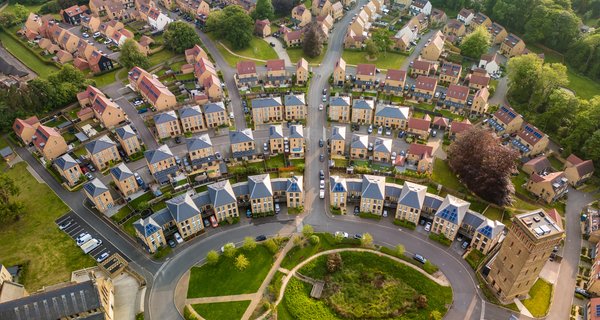Scenario 1 – High innovation
In the ‘High innovation’ scenario, the rate of innovation in the heating industry increases, making heat pumps both cheaper and more efficient. Heat pump installation costs fall rapidly, (by 4.5% per year instead of 2.5%) and they become more efficient – the average SCOP rising from 3 to 3.3 over time. There is a modest rebalancing of levies which leads to the electricity-to-gas price ratio to settle at 2.6. Subsidies are reduced gradually from 2028 onwards, and never exceed £2.4bn per year cost to governments.
Details of the scenario
Overall costs are driven down primarily by reductions in the market price for heat pumps. The cost of installing a heat pump falls by 28% by 2030 (from 2023 levels). Running costs fall due to higher heat pump efficiency enabled by technological improvements and increased quality of installations (requiring 3.8 times less energy to run a heat pump than a boiler by 2030). To further bring down running costs we equalised the total levy contributions on typical consumption [5] electricity and gas bills (to £97.80 annually) while keeping total levy revenue constant. The resulting per unit rates are 3.22p per kWh of electricity and 0.75p per kWh of gas, from 4.86p and 0.30p at the time of writing [6]. As electricity becomes cheaper and gas slightly more expensive, the price ratio reaches 2.6 (compared to 4.1 in 2024). The wholesale price of electricity and gas meanwhile follow the reference projections by DESNZ. Because both running costs and install cost both fall relatively steeply in this scenario, governments are able to reduce subsidies after 2028 while maintaining whole-life price parity. Heat pump subsidy is reduced to £5,000 in 2028, £3,750 in 2029, £2,500 in 2031 and finally zero in 2034.
In this scenario, it gets progressively cheaper for people to purchase heat pumps over boilers while subsidies remain high, but even after they are reduced most households are better off installing a heat pump all the way until 2034 when subsidies end (Figure 4).

Difference between median annualised whole-life cost of heat pump and gas boiler
Figure 4
This line graph illustrates the difference in median annualised whole-life costs between heat pumps and gas boilers from 2024 to 2035 under the “High innovation” scenario. Negative numbers mean households save by switching to a heat pump. The graph shows costs for eight home archetypes: flats; bungalows; semi-detached, terraced houses and maisonettes; and detached houses, each split by construction age – before and after 1950. The average cost difference is depicted for each year of the heating being installed. Cost difference starts between £0 and -£200 and further reduces. There are several increases in relative costs when subsidies are reduced: 2028, 2029, 2031 and 2034. Costs remain negative until 2034. They are generally very similar across archetypes, but detached houses pre-1950 save somewhat more on a heat pump (this is because they have higher running costs).
Figure 5 shows the costs for households switching to a heat pump in 2030. They would save on average between £60 and £150 a year depending on the type of home they have, with an average household saving around £60 per year (Figure 6).
--------------------
[5] Typical Domestic Consumption Values 2023: 2,700 kWh electricity and 11,500 kWh gas (Ofgem)










